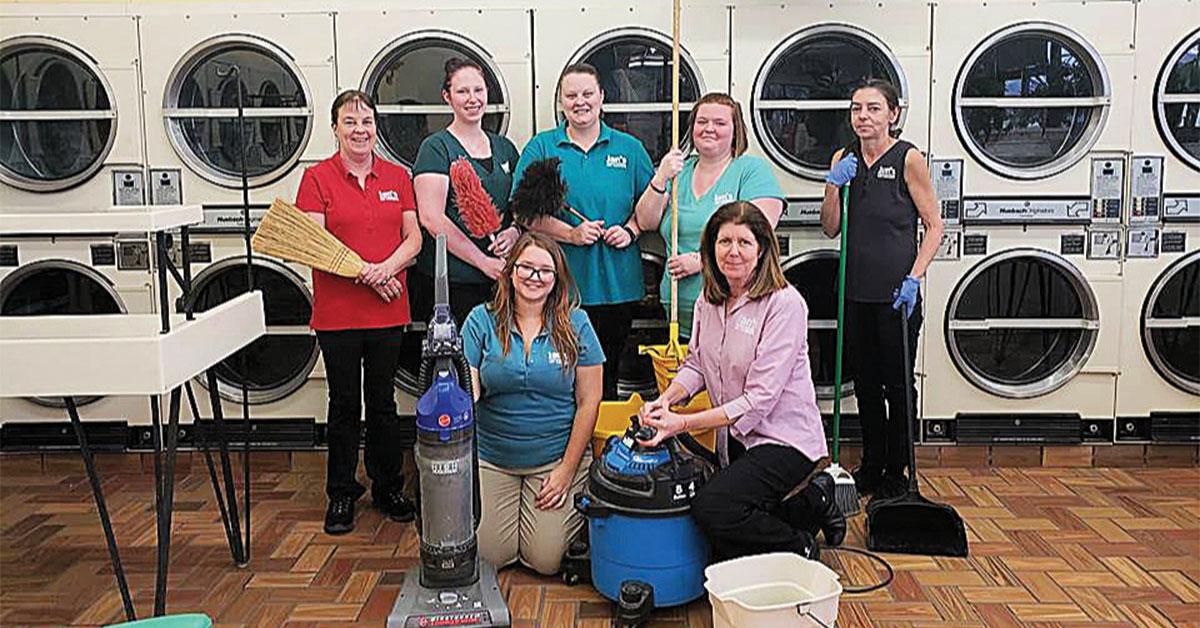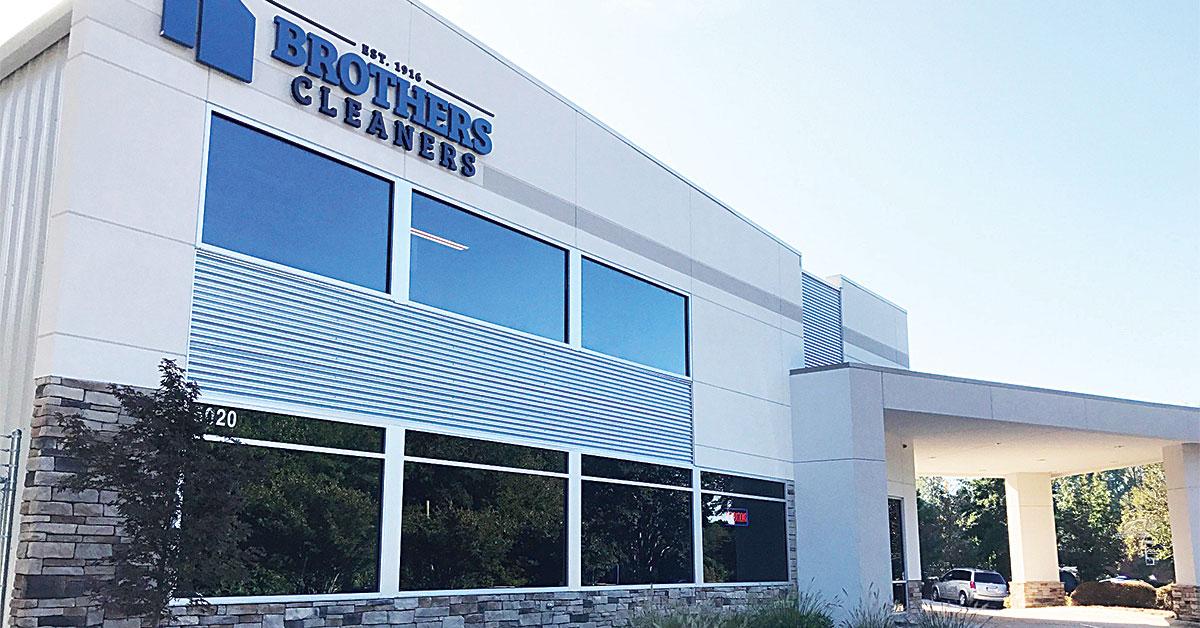CHICAGO — “We work in a pretty dirt-filled environment. We are constantly bringing in dust and dirt with the exterior doors being open most of the day and by creating buckets full of lint from all of the depilling we do on coats and sweaters,” says Dave Cass, co-owner, along with his brother Brian, of Martinizing Metro Milwaukee, which specializes in convenience by offering same-day cleaning or free pickup and delivery route service.
“With that said,” Cass explains, “every day we need to clean-off our intake screens on all of our equipment. The best way is to use a vacuum and brush both. If a brush alone is used, then typically the employee cleans the screen off and leaves the lint right there on the floor where it’s going to end up back on the screen the next morning when the machine gets turned on.”
Dust and lint, if left to build up, can cause serious safety problems and even lead to a fire in the plant. Drycleaning owners need to be vigilant in their dust control procedures. Cleaning isn’t just the name of your industry, it should be a way of life — for everyone’s safety.
But unexpected things can happen.
Cass relates a lesson for all drycleaning operators: “My biggest surprise to date came recently after a motor burned up on one of our shirt units. I literally had just inspected the work done in this area about a week earlier and the cleaner had done what I thought was a great job. The cleaner removed a ton of lint and used a vacuum on all of the motors to get out what we thought was most of the lint.”
“What I thought,” is the key phrase here, drycleaning owners.
Cass continues: “What I didn’t realize was how much was still packed in that motor, causing it to overheat and catch fire. The electrician showed me afterwards how much lint was still left in there.”
Cass notes that: “We now use an air gun to try and blow out even more lint. Had we kept up with the lint early on it would not have been the problem that it became.”
Another key phrase to dwell on: “Kept up.”
Critical to stopping lint and dust buildup at your operation is how well you stick to your cleaning routine.
Enter Bob Hilker, one of two co-owners, with twin brother Tom, of Raleigh, N.C.-based Brothers Cleaners.
“For dust control maintenance, we, on a quarterly basis, come in on a weekend and blow down the entire plant,” he relates.
His drycleaning operation was devastated by a catastrophic fire in 2015 but it was completely rebuilt and re-opened two years later, and then was named 2018’s Grand Prize winner of the American Drycleaner Plant Design Award.
Hilker notes that to be ‘preventative,’ you must, simply put, keep your plant clean. Period. His straight-to-the-point message, learned from experience, is a reminder to all drycleaning operators.
The turn of a phrase might go: In this business of clean, keep your business clean. And that means relying on your team members; consultants and partner companies; and following a plan.
HOUSEKEEPING
Annually you need to clean inside your vent pipes for the dryers and knock all the dust down from the rafters and walls using a duct cleaning company, points out Jan Barlow, owner of Jan’s Professional Dry Cleaners, Clio, Mich.
“It’s a little bit of work to move all the stuff out of their way to clean the ceiling and the walls but everything is brighter after the job is done,” she says.
Barlow’s business has one location, with five routes in the surrounding counties, and as she notes, cleans all garments and household goods; fire and water restoration; wedding and formal wear, alterations and repairs, vintage garment restoration, and more.
She says: “There are a machines that can be hung from the ceiling that you can run at night that will keep the dust from settling on all your equipment. I haven’t invested in one yet; for my operation it is more cost-effective to bring in the duct cleaner annually.”
According to Barlow, who is also chair of the National Fire Protection Association’s NFPA 32 Standard for Drycleaning Facilities committee, housekeeping is the number one way to stay on top of dust control: “Daily the lint screens need to be cleaned on all equipment, either brushed with a broom or vacuumed.
“It’s hard to get your staff to clean their work area at the end of every day but if each person takes care of their work space you never get into a really dirty state. It take discipline and teamwork,” she adds.
Barlow has some tips for drycleaning operators regarding dust control in the plant: “Since we are in the garment business, an obvious byproduct of handing garments is lint which is dust and it goes everywhere! Daily maintenance with a vacuum, a cloth, and a broom with a dustpan are your best measures to stay ahead of the mess,” she says.
“Not only does the lint and dust lay on items it also becomes sticky from the moisture of the steam we produce,” Barlow points out.
“What are the obvious places to clean? Start with the drycleaning machine,” she reminds, “you need to clean the lint and button trap. I believe that this should be done after every load. It helps maintain quality and keep your machine clean.”
The presses should be covered at night so the dust that is floating in the air doesn’t settle on all the presses, Barlow mentions, adding that there are so many places that can get dirty, “We use regular full size sheets to cover all our presses every day at the end of the shift.”
In a worst-case, where dust and lint can lead to a fire, drycleaning owners need to have a fire drill and emergency escape plan in place. Both Martinizing Metro Milwaukee and Jan’s Dry Professional Dry Cleaners note they work regularly with on-site compliance firms such as Safety & Environmental Compliance Consultants, Inc. (S&ECC) who come in yearly and conduct a safety meeting.
“We have worked with S&ECC, Henry and Jan Parker since 1998,” relates Barlow. “They make sure we have a fire escape plan and document that all employees have signed-in on the safety training.”
She says that: “We also have several maps posted throughout the entire plant to list where all the fire extinguishers and exits are. Annually, we also have a company that checks all our extinguishers to make sure they are charged.”
Back to Cass on what tips he would give for dust control:
“Two things I would recommend,” Cass relates, “The first is to use a rotating ceiling fans for an hour or so every night especially over your shirt department. If you ever wonder if they work, just ask anyone who has one what happens when they don’t run it for a week or two. You’ll see all of the dust flying around like snow that you normally wouldn’t see if used daily.”
The second thing Cass recommends: “Is to use filters or filter screens whenever possible. You don’t want to restrict the airflow, but if you can stop the lint before it gets into the equipment that’s what you want to do; and make sure to clean them out on a regular basis.”
Remember the lesson from Cass about thinking all was great — it wasn’t. Check everything, inside and out, and make certain; because your lives and your business will depend on it.
Another tip from Hilker: “Insurance is Number One. Make sure your insurance adjuster has looked over everything from A to Z. Be well-covered.”
Barlow relates that: “Fortunately, we have never had a fire. We really strive to lead by example, safety first.”
About dust and lint, and their dangers, she says, “The biggest problem I see is if someone is doing laundry for a restaurant and they accidentally don’t get all the grease out of the linens, they can spontaneously combust just sitting in a cart after drying.”
Barlow’s dust control tip: “Get a daily routine! If you’re not able to do it daily, then do it ever other day or once a week on your slowest day.”
Asking for a comment to describe why fire is that deadly and safety that important, Barlow answers: “You don’t get a second chance at death!”
To recap, when it comes to dust control at your drycleaning operation, remember these: daily maintenance; check all equipment and spaces yourself; get outside expert help; use your team members; don’t forget insurance coverages; and have an updated fire safety plan with practiced escape routes.
Be the guardians of your own ‘galaxy’ at your cleaning operation. Control dust and lint. Don’t let them control you, or your team, or your drycleaning business.
Now you’re all clear for dust off!
To read Part 1, go HERE.
Have a question or comment? E-mail our editor Dave Davis at [email protected].



